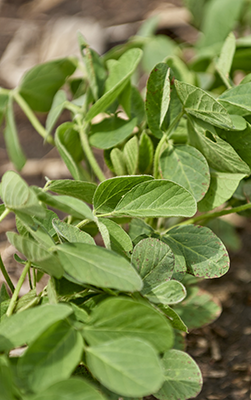If you want optimal growing conditions for your spring crops, you’ll need optimum soil health. The health of your farmland soil depends on three critical factors: physical structure, soil composition , biological composition (ideally hosting a diverse array of microorganisms) and chemical makeup (the nutrients and minerals it contains).
Make sure your farmland is in capital shape for spring crop planting with these spring soil preparation tips:
- Start with a soil test. Before you add any soil amendments, understand what shape your soil is in. Work with reputable soil testing facilities to collect and submit soil samples. Remember, if you collect samples on your own, get those samples to the lab as soon as possible.
- Adjust soil pH if needed. Healthy soil generally has a pH between 6 and 7. This pH range best supports soil microbial activity that will give your spring crops the best access to nutrients. Remember, you should work with a soil testing company to determine the correct amount of lime (for low pH soils) or sulfur (for high pH soils) needed in your field.
- Consider your soil’s nutrient load. All row crops need nitrogen, phosphorus, and potassium, but different crops need them in different amounts. Too little fertilizer can limit crop yields, while too much can be a waste of money.
For your corn acres, the key to a successful spring nitrogen application is choosing the right fertilizer type, nitrogen stabilizer, application rate and timing. Given spring and early summer are prime times for nitrogen loss in the soil, applying a nitrogen stabilizer is critical. During a wet spring, the risk of nitrogen loss increases dramatically.
In most cases, rhizobium bacteria should be adequate to supply the nitrogen needs of your soybean crop. However, where fields have sat fallow/absent of beans for extended periods of time, it may be worthwhile to inoculate. With soybeans, potash rivals nitrogen for representation within the plant by weight. Consider an application of potash prior to planting beans. Consult your crop protection retailer for advice on a nutrient application strategy for your specific row crops.
- Take soil moisture into account and plant spring crops accordingly. Make sure you understand how moisture can impact spring crop emergence and yields. Planting into soils that are too wet can cause sidewall compaction and smearing, which can restrict root development and harm yield, especially if soil dries out later in the summer. If your soil is too moist, it also can cause fungi to proliferate, potentially leading to root rot.


 While the above tips provide general guidance on getting spring crops in the ground, there are many crop-specific guidelines to promote maximum yield potential at harvest time. Choosing when to plant and planting during optimum conditions is key. Here are planting checklists specific to three key crops:
While the above tips provide general guidance on getting spring crops in the ground, there are many crop-specific guidelines to promote maximum yield potential at harvest time. Choosing when to plant and planting during optimum conditions is key. Here are planting checklists specific to three key crops:
